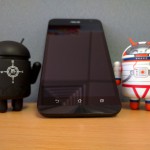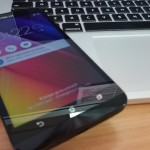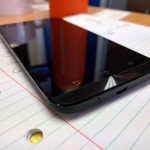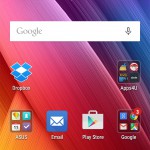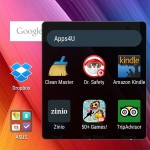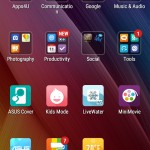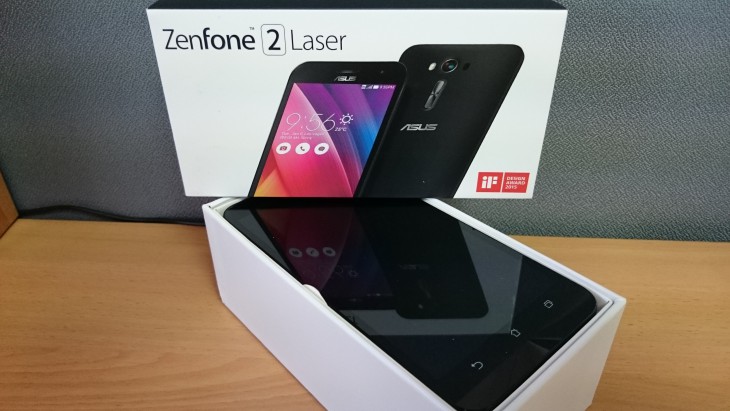
When we reviewed the original Asus Zenfone 2 we found that it was good at delivering above the expectations of someone buying a sub $300 phone, delivering far above what it promised as well. A new iteration of the device has landed and on the surface at least it seems to have the same capabilities to punch above its weight, could this be the step Asus need to take to make a successful entry into the Android Smartphone Market?
Asus have a strong history in manufacturing computer hardware; mainboards, Video cards, gaming machines and even their own branded laptops. All of which had stand alone success, but in terms of Android devices and particularly tablets, nothing has compared to the success of the original Nexus 7 tablet which made the Asus name common in the Android space.
- Solid and Durable Build
- Good battery life
- Screen visibility in sunlight is excellent
- Great value for money
- Selfie Cam is terrible
- Ugly UI
- Bloatware packed out of the box
- Easy to induce lag
Hardware
The physical size of the Zenfone 2 Laser feels to be a really nice mix of functionality and compromise for a lot of users. Its interesting to see the take Asus have on the button placement with the power button on the top edge of the device right in the middle and the volume rocker on the back of the device below the camera lens. The placement of these isn’t completely unnatural in the way you hold your device, but does require a conscious effort to press them rather than with some devices you can easily, but accidentally turn the volume down or the screen off while you’re operating the phone with one hand.
While Asus don’t really have their own distinct look like some of the big players in the Android space do, there’s a look about the Zenfone 2 that means you’re unlikely to mistake their gear for someone else’s. Asus have chosen to stick with capacitive buttons across the bottom of the screen which; on a screen the 5.5″ screen does work quite well at times also feels like something of a waste of screen real estate.
The standard placement of the charging port on the base of the device and headphone socket on the top of the device means that the sides of the device are devoid of any buttons at all which was an interesting and pleasing change, there were no accidental turning volume down during calls or the screen off while using the phone. All of the physical button interactions were very deliberate and easily controlled.
Build Quality
Lightweight, solid build, big screen, great performance, outstanding battery life; that’s a short list of wants that most users have. While the Zenfone 2 does connect on most of these points, it certainly doesn’t knock it out of the park; Base hits at best, perhaps a stand up double on solid build. With the ever growing expectations on mobile devices, manufacturers are forced to play one of two games;
1. Hit all the markers regardless of cost – This is what you call a flagship device, a couple of easy examples are the Nexus 6p ($899 for 32GB, $999 for 64GB and $1099 for 128GB) or the Samsung Galaxy Note 5 at $1097 (for a 32GB model)
2. Aim for the skies, but compromise where necessary to hit either a price or performance markers. Devices like this are in that realm and when it comes to compromise they’ve done quite well to avoid serving up a rubbish phone but still keeping the price down to a reasonable level.
For a phone costing less than $300 you could be forgiven for expecting a flimsy piece of… uhhh, plastic! The Zenfone 2 is pretty solid, probably a bit too solid and borders on the weighty side in respect to the physical build coming in at 174g. But it’s not just the weight that makes it feel solid, when you give the phone a “firm twist” there is near zero give in it and no nasty noises like the creaking you can get from some phones. I did find that the images on the screen discoloured slightly when manipulating the device to feel how solid the chassis is, but there were no lasting effect of this to the screen.
There were a couple of minor disappointments for me with the build of the phone. First one was the placement of external speaker which was easy to conceal with your hand, rendering it nearly useless as the volume output was actually quite dull to begin with. The second was the vibrating alert was certainly there but it was also pretty half hearted which means that if you’re on the go in a noisy environment you’re not going to hear the phone ring, nor will you feel it.
Screen
The screen is one of the compromises I mentioned earlier, it’s nothing earth shattering for a 5.5” IPS screen to be running 720p at 267ppi. But it’s more than adequate for what the average punter is going to use their phone for. It displays static images really nicely with good colour reproduction, the colours are vivid an clean without being oversaturated as some cheaper phone or poorly configured AMOLED screens tend to be. It handles video playback really well (although the phone does get quite warm to the touch if you’re playing HD videos for long). Sometimes it is hard to put things into perspective when reviewing what is essentially an entry level devices, but it is fair to say that when it comes to the screen on the Zenfone 2 it punches above its weight class.
A couple of real standout features on the screen of the Zenfone 2 for me with this phone were the fact that its got double tap to wake (DT2W) which is not necessary but nice to have, particularly if you have your phone on your desk a lot of the day; it’s just quicker to double tap than pick up the device and press the power button. The other real standout (and frankly a really big surprise to me) was the screen visibility outdoors in bright daylight, no squinting or shielding your screen here thats for sure. The illumination behind the screen was enough for me to easily and clearly read emails on the go even on clear bright days.
Battery life
I tend to give batteries a workout; OK I smash them pretty hard, even the larger capacity batteries out there struggle to get through a busy day on the phone for me. I have a lot running in the background all day such as multiple social media accounts, multiple email accounts, Pushbullet for multiple purposes, Telegram and of course the Ausdroid App. My daily driver has a 2600mAh battery and manages OK but often needs a quick top up about 3pm, so I felt it wasn’t unreasonable to expect a 3000mAh battery in a lower spec phone to last longer; it didn’t…
Most days it was on par with what I get from my Z3 Compact which I felt missed the mark on battery life. While there was a bit of a difference if I was using Wifi data a lot during the day, I found that the battery drain on the Zenfone 2 was pretty consistent and after a week or so quite predictable. But that didn’t help ease the disappointment that the battery didn’t live up to my expectations of it. In fact; one particularly heavy use morning I managed to run the battery to the point the phone shut down on my lunch break at around 1pm. Generally though if I had a busy day with phone calls, I was searching for power by about 2pm to ensure I made it home with battery left which means that for a lot of on the go and on the phone people, this is not the phone for them.
Camera
The camera hardware on this phone is not bad with a 13MP rear facing camera, capable of grabbing 1080p videos and supports HDR. But the truth be told, the camera results are not great. It is very capable of taking some ‘happy snaps’ if you’re out and about in good light conditions, but as soon as the light gets a bit dull you’ll find that you get focus issues and the resulting shots are not good. The camera app is really basic and for someone who wants to point and shoot, you’ll get the best of its capabilities without too much effort.
NB. Selfie obsessed narcissists. do not buy this phone. The front facing “selfie” camera is dreadful, the colours are washed out and despite (in the interests of the review!) multiple attempts and some serious duck face; this was the best I managed. For a cheap phone, the camera does a pretty good job at delivering a reasonable photo but if you’re buying a phone for the camera just give this one a wide berth and look further upmarket.

Connectivity
There’s all the expected HSDPA 850/900/1900/2100 and LTE bands 1,2,3,4,5,7,8,20 available on the device to get you connected on any of the Australian carriers bands, I did find indoors that the signal strength dropped quite significantly even when I know (I could see the tower) that I was very close to the nearest mobile tower. During my testing I saw roughly a 20% signal drop when indoors versus out and the data speeds dropped by about 40% indoors, in fairness; odds are if you’re indoors you’ve got Wifi though.
Nothing earth shattering to report when it comes to the other connectivity that you expect from phones of the current era, perhaps under specced when it comes to Wifi though. 802.11 b/g/n is what you’ll get, no ac option which for most users isn’t going to be a critical flaw but its worth a mention in case transfer speeds are of vital importance to users. The other usual trimmings are there including Bluetooth 4.0, A-GPS and GLONASS.
Sound
The call sound is really good on the Zenfone at times better than other much more expensive devices that I’ve used and reviewed. The quality dropped quite quickly if the signal strength was down, but quite impressive to see was on near zero signal in the basement of a hospital; the phone was able to hang on to a call and still be audible at both ends.
The external speaker on the phone isn’t brilliant from a volume perspective, but produces sufficient volume and quality of sound to provide some background music if you’re outside with some friends enjoying a quiet evening drink; but I wouldn’t be attempting to use it as a speaker replacement thats for sure. When it comes to music playback via headphones, the sound performance from it is reasonable straight out of the box and I’m really pleased to say that among the many apps that come pre-installed on the device you’ll find a reasonable software equaliser which helps quite significantly when you tune the sound to your ear. Be cautious though if you’ve got headphones that require a fair whack of power because you’re just not going to get it from this phone and your sound playback will seem pretty flat.
Performance
I don’t think this is a bombshell to anyone; if you’re after a lighting quick, high performance device then this is not the phone for you. After a clean boot, the phone is pretty quick in fact its impressively quick for such a cheap device however…
There are a few niggling issues that will annoy some users like the load time on apps and the seemingly endless lag if you’re fast switching between a lot of apps regularly. It seems as though the device is either performance (i.e. CPU) or memory starved if you try to use more than 2 apps at a time and you’ll know about it with the significant speed drops you’ll see, a quick reboot and you’ll be off and flying again.
While it didn’t take much to induce it, the lag I experienced while testing this phone isn’t something that the mum’s and dad’s of the world are going to see when they grab the phone to make a quick call or send an email. It’s only when you’re using it for extended periods or switching between apps you’ll see any real issues with performance.
Software
Depending on your personal favourites, software on a device can be a deal breaker or the home run. The skins that manufacturers have on their own devices offering their flavour; topping if you will, on the core OS of Android are as varied as the manufacturers. A lot of manufacturers have a winning formula, where others (such as Asus) are searching for theirs. At the moment, Asus still have some work to do to catch up on the design factor and ease of use that the larger players have.
Android OS
Android 5.0 Lollipop comes with the Zenfone 2 Laser but you’ll find that the UI that you’re looking at feels a bit outdated, at times KitKat springs to mind and on occasions I thought I was looking at Jellybean. The core OS is certainly there, but Asus haven’t just missed the boat when it came to Material Design; I’m not convinced they even knew the boat existed to catch it. Easily overcome of course with some themes but its not something a user should need to do in the current era of Android.
Skins
I hate being so blunt about this, but the UI you get with this is ugly. I took the screenshots I needed for the review and switched to my preferred launcher (Action Launcher Pro) to get some familiar looks and predictability in behaviour from the phone. The supplied skin feels very clumsy and reminds me a little of Ice-cream Sandwich, which (while good at the time) is a little depressing to go back that far with a current device that could be a lot better.
Bundled Apps
There a way too many apps bundled with this phone to go through them all, I had 3 weeks with the phone and needed to check out something other than the apps that came with it. There is that much bloat on this phone out of the box that Asus are kind enough to bundle it into categories for you; Apps4U, Communication, Google (ok necessary, not bloat), Music & Audio, Photography, Social and Tools as well as a couple of free floating apps on the home screen.
Two of these particularly I would like to highlight, Clean Master and Dr Safety. Possibly an interesting combination you’re thinking but its actually really funny. Clean Master as highlighted when Kogan were found to be selling Malware infected phones, is known to contain adware which frankly I never want on my phone. So naturally I didn’t run that app, but out of curiosity I did run Dr Safety; I was promptly notified that the phone was being cleaned up and Clean Master was disabled.
As you can see from the screenshots below and as mentioned earlier, there are a lot of bundled apps with this phone and most are unlikely to be used by anyone; but if you take the time to delve into some of them you may just find a piece of gold in there.
- 5.5″ IPS display running 1280 x 720 resolution @ 267 ppi
- Snapdragon 410 / Octa-core CPU / Adreno 306 GPU
- 2GB RAM
- 16 GB Storage + MicroSD Card up to 128GB
- 16MP rear facing and 5MP front facing cameras
- Connectivity (802.11 b/g/n Wi-Fi, Bluetooth 4.0, NFC)
- GPS, GLONASS
- Cellular:
- GSM: 850/900/1800/1900 MHz
- 3G: 850/900/1900/2100 MHz
- 4G LTE: (B1)2100/(B2)1900/(B3)1800/(B5)850/(B7)2600/(B8)900/(B20)800
- Dual Micro SIM
- Android 5.0.2 Lollipop
- 3000 nah Battery
- 152.5mm x 77.2mm x 10.8mm @ 170 grams
There is a real focus from tech media on the latest, greatest, biggest and “baddest” of everything but that isn’t necessarily what the every day user wants or needs. We happily accept at Ausdroid that we are among a low percentage of users who will flog the guts out of devices to see if and when they break rather than use them as they’re intended. Its always good to maintain some perspective on things; its very easy to lose sight of the fact that not everyone wants or needs a top end CPU, 4GB of ram and a QHD screen, so following my review of the Galaxy Note 5 a few weeks ago, I have actually (somewhat to my surprise) enjoyed reviewing the Zenfone 2 Laser.
Its not a Galaxy Note 5, it’s not a Nexus 6P and it doesn’t even attempt to disguise the fact its not; the financial outlay on a device like this isn’t ruinous, at AU$274.99 from Expansys; the supplier of our review unit, you probably won’t expect too much from the phone but as I’ve mentioned you’ll be pleasantly surprised at its capabilities. The screen (1280 x 720 res) is only 720p, so hardly high end but the picture it produces is enough to keep the majority of users very happy, plus the lower resolution results in the GPU being pushed far less and has the positive effect of increasing battery life. For the “average user” what the Zenfone 2 Laser represents is a really good value for money purchase which will do them well for a reasonable time to come.
One of the biggest telling factors for myself as a power user was the intermittent lag that I got when I had been either playing a game, watching video or something else that is either GPU or RAM intensive. To be fair, a phone that costs sub $300 really isn’t intended for this sort of (ab)use and in reality its actually stood up to the flogging quite well.
Would I buy one?
Personally, no I wouldn’t but I have some pretty clear needs from my phone and even on paper this device just doesn’t meet my needs. Its underpowered for performance, the connectivity capabilities are touch on the restricted side and the battery life isn’t enough for me. But in reality users like myself are not the target market for this phone.
If you or someone you know are after something affordable, durable and offers a pretty good user experience out of the box then I wouldn’t hesitate to recommend you give this phone a crack. Its a great phone with some cut down functions for someone who hasn’t had a smartphone before, or perhaps wants to get Grandma/Grandpa on Skype (or some other form of IM) and when you consider that you can pick one up from Expansys for $274.99 or a number of other online retail stores, but you’re unlikely to find this one at any of the big chain stores since Asus just aren’t going to draw the sales that Samsung, HTC or the Nexus name will.


